Could These Gadgets Help Your Aches and Pains?
We take a look at the science behind 5 pain-relief gadgets that sound wacky but just might make a difference.
By Corrie Pikul
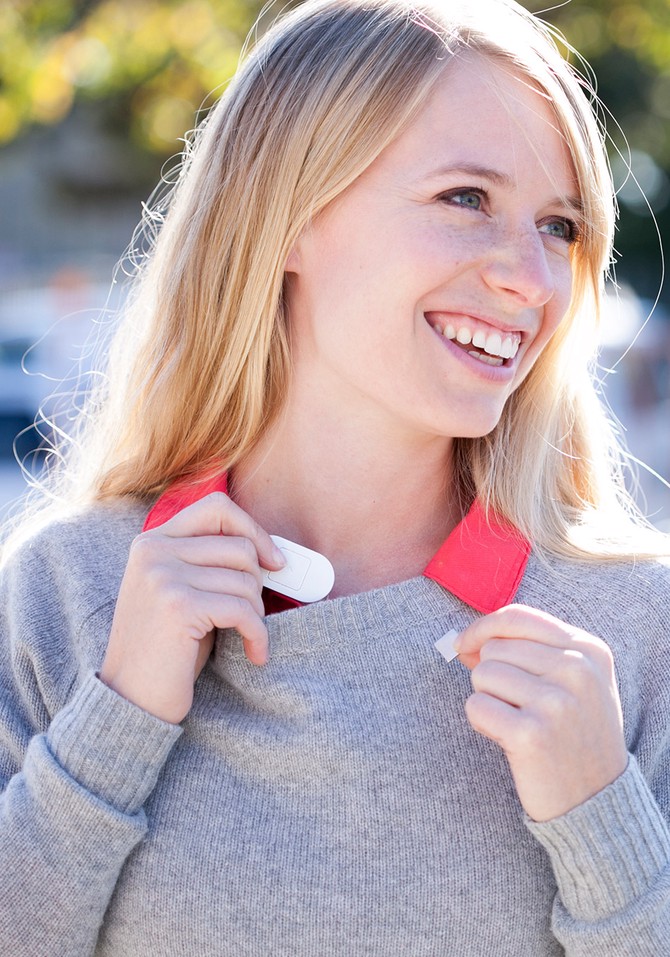
Photo: Courtesy of Lumo Lift
The Posture Fix That Will Save Your Back
What: Lumo Lift, $100
What for: Pain in the upper back, shoulders and lower back (it's all connected, as you know).
How it works: The tinier, shinier, more sophisticated version of the Lumo Back, which monitors posture with a sensor worn on a belt, the Lumo Lift tracks posture with a sensor clipped on your chest with a pair of magnets. You hunch, it hums.
Why it might help: Any physical therapist will be happy to tell you how our bad posture is leading to tight upper body muscles and lots of unnecessary back pain. We promise in yoga class that we're going to start living like there's a wire attached to our head pulling us up, up, up...and as soon as we walk out the door, we're bent over our phones. An O magazine editor who tried Lumo Back said it was the thing that finally made her consistently conscious of her posture; this new version promises to do that and more.
One more thing: The Lumo Lift also tracks steps, and research shows that regular exercise (walking counts!) helps ameliorate back pain.
What for: Pain in the upper back, shoulders and lower back (it's all connected, as you know).
How it works: The tinier, shinier, more sophisticated version of the Lumo Back, which monitors posture with a sensor worn on a belt, the Lumo Lift tracks posture with a sensor clipped on your chest with a pair of magnets. You hunch, it hums.
Why it might help: Any physical therapist will be happy to tell you how our bad posture is leading to tight upper body muscles and lots of unnecessary back pain. We promise in yoga class that we're going to start living like there's a wire attached to our head pulling us up, up, up...and as soon as we walk out the door, we're bent over our phones. An O magazine editor who tried Lumo Back said it was the thing that finally made her consistently conscious of her posture; this new version promises to do that and more.
One more thing: The Lumo Lift also tracks steps, and research shows that regular exercise (walking counts!) helps ameliorate back pain.
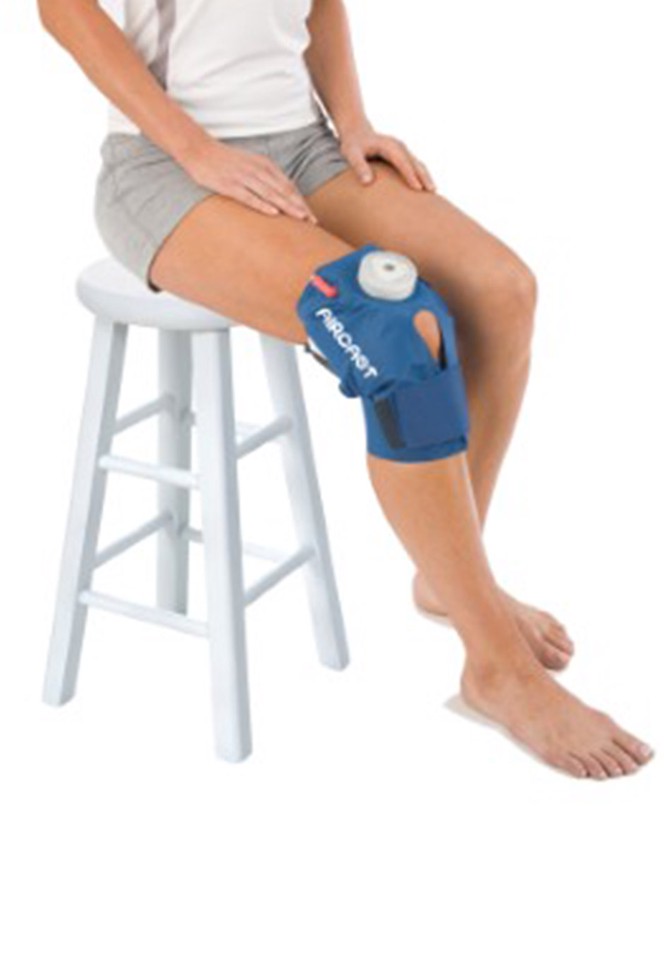
Photo: Courtesy of DJO Global
A Cuff That's Like a Hug for Sore Knees
What: Cryo/Cuff, $80
What for: This cuff, a standard in knee surgeons' offices, is commonly recommended for injuries to the meniscus.
How it works: Picture an ice-filled blood pressure cuff—but designed to fit over your knee instead of your bicep.
Why it might help: The combo of compression and ice helps keep inflammation down, says Daniel F. O'Neill, MD, EdD, a New Hampshire orthopedic surgeon and the author of Knee Surgery, who uses this device with patients all the time. Less inflammation means less pain and more mobility, and that's key for long-term recovery. Any rehab plan for your knees needs to include stretches and exercises that will build strength and help with alignment and flexibility, O'Neill says. He recommends trying the cuff in the morning, when you're most likely to be stiff, as well as after finishing the rehab routine recommended by your physical therapist, to prevent inflammation and swelling.
One more thing: For compression and ice on-the-go, try these Dr. Cool freeze-and-wear recovery wraps (not as compressing, not as cold, but also not as bulky or pricey, $25–$35 each.)
What for: This cuff, a standard in knee surgeons' offices, is commonly recommended for injuries to the meniscus.
How it works: Picture an ice-filled blood pressure cuff—but designed to fit over your knee instead of your bicep.
Why it might help: The combo of compression and ice helps keep inflammation down, says Daniel F. O'Neill, MD, EdD, a New Hampshire orthopedic surgeon and the author of Knee Surgery, who uses this device with patients all the time. Less inflammation means less pain and more mobility, and that's key for long-term recovery. Any rehab plan for your knees needs to include stretches and exercises that will build strength and help with alignment and flexibility, O'Neill says. He recommends trying the cuff in the morning, when you're most likely to be stiff, as well as after finishing the rehab routine recommended by your physical therapist, to prevent inflammation and swelling.
One more thing: For compression and ice on-the-go, try these Dr. Cool freeze-and-wear recovery wraps (not as compressing, not as cold, but also not as bulky or pricey, $25–$35 each.)
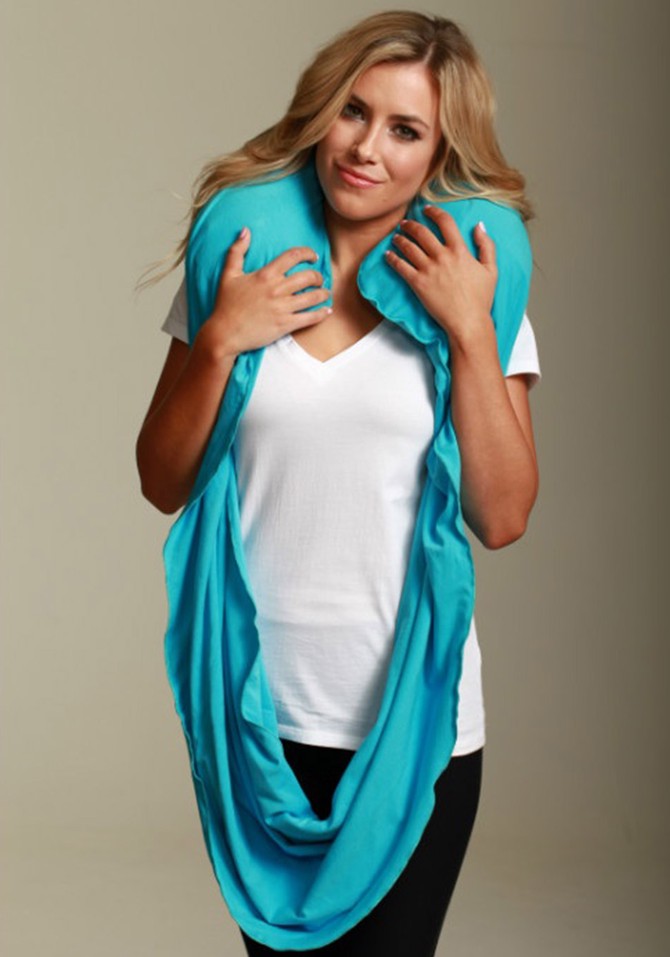
Photo: Courtesy of Sleeper Scarf
The Most Stylish Neck Protector
What: The Sleeper Scarf, $65
What for: Helping you deal with a sore, achy neck when you're traveling.
How it works: It's a scarf! It's a neck pillow! It's an inflatable travel neck pillow hidden in a scarf!
Why it might help: You know that a neck pillow makes it easier to sleep while you're sitting upright, but there's also research that shows it can aid in the relief of chronic neck pain, says Raphael Castro, DC, a chiropractor in Rockland County, New York, who is a fan of the Sleeper Scarf. When you nod off with your head tipped sideways, you risk overstretching the ligaments in your neck. Even when you wake up and release the pressure, the ligaments remain strained, leading to a stiff neck and potentially long-term neck problems later. A neck pillow (or cervical pillow, as it's known to doctors) keeps the spine and head in alignment, Castro says.
One more thing: Castro adds that neck pillows can also prevent cervicogenic headaches, which are often caused by stress to the neck and involve a steady, non-throbbing pain at the back and base of the skull.
What for: Helping you deal with a sore, achy neck when you're traveling.
How it works: It's a scarf! It's a neck pillow! It's an inflatable travel neck pillow hidden in a scarf!
Why it might help: You know that a neck pillow makes it easier to sleep while you're sitting upright, but there's also research that shows it can aid in the relief of chronic neck pain, says Raphael Castro, DC, a chiropractor in Rockland County, New York, who is a fan of the Sleeper Scarf. When you nod off with your head tipped sideways, you risk overstretching the ligaments in your neck. Even when you wake up and release the pressure, the ligaments remain strained, leading to a stiff neck and potentially long-term neck problems later. A neck pillow (or cervical pillow, as it's known to doctors) keeps the spine and head in alignment, Castro says.
One more thing: Castro adds that neck pillows can also prevent cervicogenic headaches, which are often caused by stress to the neck and involve a steady, non-throbbing pain at the back and base of the skull.
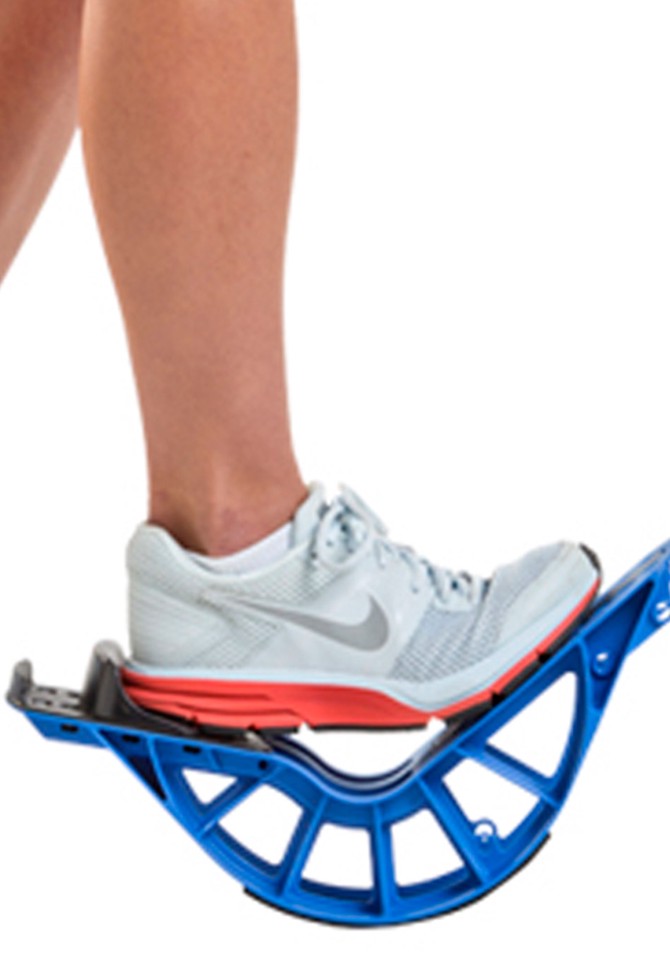
Photo: Courtesy of Medi-Dyne
A Stretching Device That Could Save Your Soles
What: The ProStretch Plus, $40
What for: Plantar fasciitis (aka heel pain)
How it works: This rocker has a V-shaped platform to help stretch out the inflamed muscles and tissues on the bottom of the foot.
Why it might help: While the research on stretching as a cure for plantar fasciitis is inconclusive, one systematic review published in 2011 did suggest that stretches that get directly to the plantar fascia (which runs along the bottom of the foot) may provide better short-term relief than stretching the Achilles or other parts of the lower leg. The catch is that the bottom of the foot is a notoriously tricky area to stretch.
One more thing: These wobbly, unstable devices are ideal for those who have already used them under the supervision of a PT (they tend to be big fans). If you've never used one and you're naturally klutzy, you might want to try orthotics instead: Hillary Brenner, DPM, a podiatrist in Manhattan, recommends models from Powersteps and Superfeet. The clinical research is inconclusive for this treatment, too, but Brenner says that 90 percent of her patients claim the orthotics helped their pain.
What for: Plantar fasciitis (aka heel pain)
How it works: This rocker has a V-shaped platform to help stretch out the inflamed muscles and tissues on the bottom of the foot.
Why it might help: While the research on stretching as a cure for plantar fasciitis is inconclusive, one systematic review published in 2011 did suggest that stretches that get directly to the plantar fascia (which runs along the bottom of the foot) may provide better short-term relief than stretching the Achilles or other parts of the lower leg. The catch is that the bottom of the foot is a notoriously tricky area to stretch.
One more thing: These wobbly, unstable devices are ideal for those who have already used them under the supervision of a PT (they tend to be big fans). If you've never used one and you're naturally klutzy, you might want to try orthotics instead: Hillary Brenner, DPM, a podiatrist in Manhattan, recommends models from Powersteps and Superfeet. The clinical research is inconclusive for this treatment, too, but Brenner says that 90 percent of her patients claim the orthotics helped their pain.
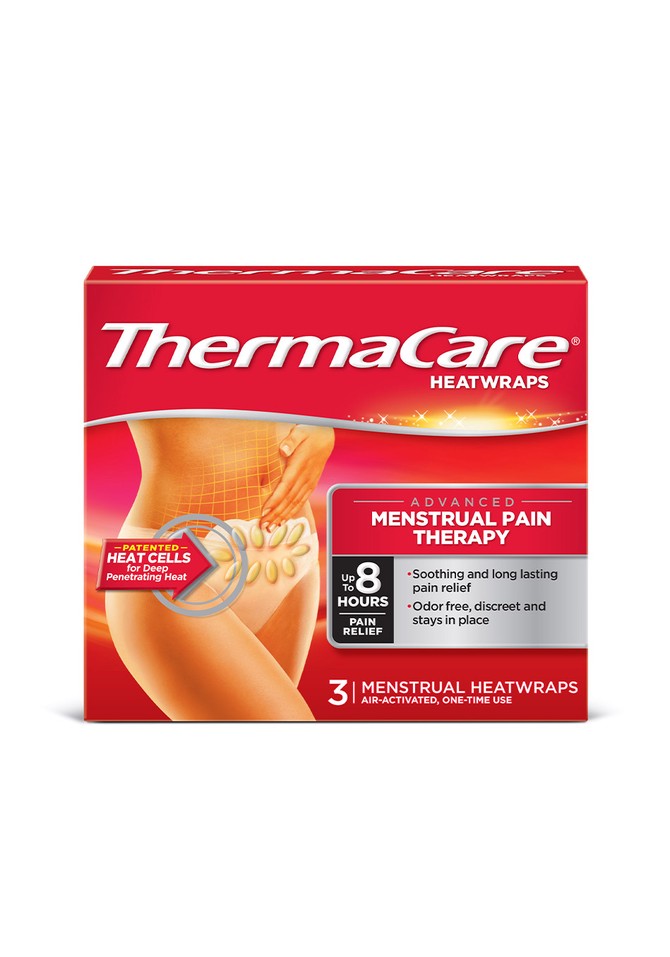
Photo: Courtesy of Pfizer
A Different Kind of Pad You Wear When You've Got Terrible PMS
What: ThermaCare Menstrual Heat Wraps, $7 for three
What for: Period cramps
How it works: Adhesive tabs help keep these single-use heating pads in place against your lower abdomen, where they deliver soothing warmth for up to 8 hours.
Why they might help: This is a modern, high-tech, low-cost version of the old-fashioned hot water bottle. Victorian maidens swore by this treatment, and the American Congress of Obstetricians and Gynecologists likes it, too. The long-standing theory is that the heat relaxes muscle contractions. Some newer research also suggests that applying warmth activates heat receptors located at the site of injury, which in turn block chemical messengers that trigger your body to recognize pain.
One more thing: These products can get hot enough to cause minor burns if applied wrong or left on for too long, and you're introducing them into some highly sensitive territory. Be sure to read all the fine print before trying for yourself.
What for: Period cramps
How it works: Adhesive tabs help keep these single-use heating pads in place against your lower abdomen, where they deliver soothing warmth for up to 8 hours.
Why they might help: This is a modern, high-tech, low-cost version of the old-fashioned hot water bottle. Victorian maidens swore by this treatment, and the American Congress of Obstetricians and Gynecologists likes it, too. The long-standing theory is that the heat relaxes muscle contractions. Some newer research also suggests that applying warmth activates heat receptors located at the site of injury, which in turn block chemical messengers that trigger your body to recognize pain.
One more thing: These products can get hot enough to cause minor burns if applied wrong or left on for too long, and you're introducing them into some highly sensitive territory. Be sure to read all the fine print before trying for yourself.
Published 09/10/2014

